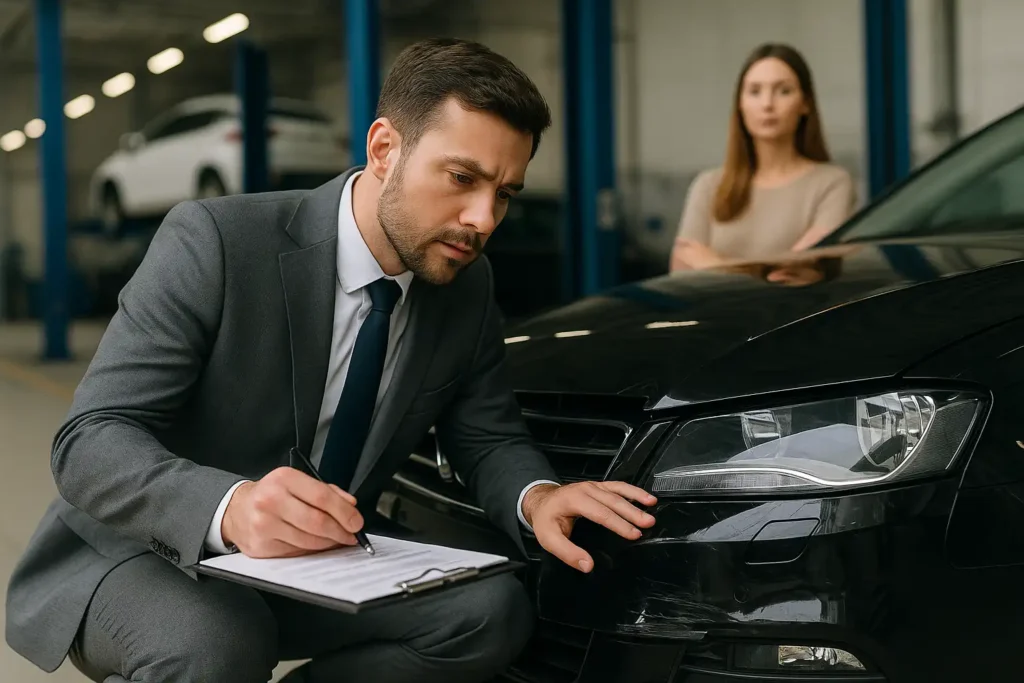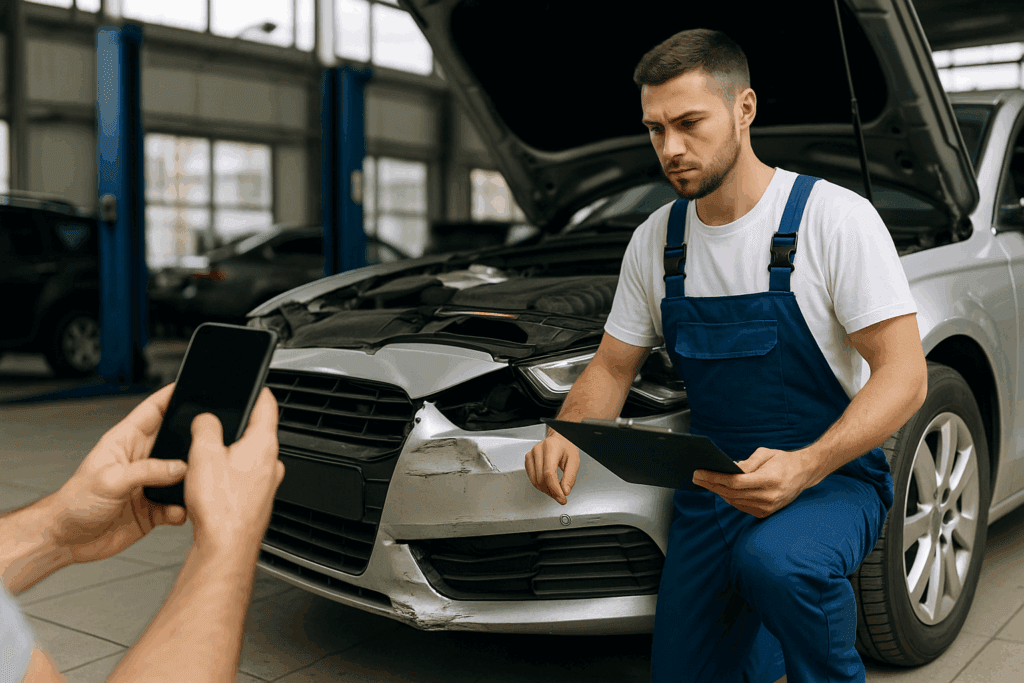Artificial intelligence is no longer just powering your smartphone or home devices — it’s steering cars on Los Angeles highways. From Teslas with Full Self-Driving (FSD) mode to Waymo robotaxis, AI-assisted vehicles are changing how Californians move. But with this innovation comes a growing legal concern: Who is at fault when an AI-driven car causes an accident? As self-driving systems become more common in 2025, drivers and passengers alike must understand how liability, insurance, and personal injury claims apply in this new era of automation.
The Expansion of Self-Driving Technology in California
Los Angeles is at the forefront of autonomous driving. Tech companies and automakers have turned its congested streets into real-world laboratories for AI vehicle systems. Tesla’s latest Autopilot updates, Cruise’s driverless taxis, and Uber’s semi-autonomous delivery fleet are all examples of how fast this technology is evolving. The NHTSA reports that as of 2025, California has issued permits for over 40,000 partially or fully autonomous vehicles.
These AI systems rely on cameras, radar, LIDAR sensors, and real-time data to make split-second driving decisions. In theory, they’re safer than humans — but when errors occur, they often lead to complex legal disputes involving multiple parties and advanced technical evidence.
How Liability Works in AI Car Accidents
In traditional collisions, the responsible party is typically a negligent driver. But when AI controls part or all of a vehicle’s operation, determining fault becomes far more complicated. Several entities may share responsibility:
- The Human Driver: If a driver misused autonomous features or ignored safety warnings.
- The Vehicle Manufacturer: When the design or programming of the AI system contributes to a malfunction.
- The Software Developer: If faulty coding or poor algorithmic decision-making caused the crash.
- Maintenance Providers: If sensors, cameras, or software weren’t updated or calibrated correctly.
California law recognizes both negligence and product liability claims in AI vehicle accidents. This means that victims can pursue damages not only from the driver but also from the manufacturer or software company responsible for the malfunction.
Recent California Court Cases Set New Precedents
Several 2025 cases have highlighted the growing complexity of AI-related liability. In one Los Angeles case, a pedestrian was struck by an autonomous grocery delivery van after its LIDAR sensor failed to detect a crosswalk obstruction. The court held both the tech developer and the operating company liable for inadequate system training.
In another case, a Tesla driver who relied too heavily on Full Self-Driving mode collided with another vehicle on the 405 Freeway. The jury found that while Tesla’s warnings were sufficient, the driver was negligent for failing to maintain control. These cases underscore how liability can shift depending on human involvement versus machine control.
An experienced Los Angeles automobile accident lawyer can investigate all aspects — from software updates and system warnings to human response time — to determine accountability.
AI Evidence: The Digital Witness
One of the biggest advantages in AI-related accident cases is the abundance of electronic data. Modern vehicles record everything from steering angle to object recognition patterns. These event data recorders (EDRs) and onboard computers serve as digital witnesses, revealing what happened in the seconds before and after a crash.
Attorneys often hire forensic experts to analyze these records. Data such as braking reaction times, speed fluctuations, and GPS coordinates can show whether a human or an algorithm made the critical decision that led to the collision. The difference can significantly affect insurance payouts and legal outcomes.

Insurance Complications in AI-Driven Crashes
California’s 2025 auto insurance update increased minimum coverage limits for all drivers, but insurance companies are still catching up with AI technology. In semi-autonomous car crashes, insurers sometimes deny claims, arguing that the software — not the driver — caused the collision.
To protect yourself, experts recommend reviewing your policy for coverage related to AI or automated driving systems. You may also want to consider supplemental coverage, such as:
- Product liability insurance for manufacturers or companies deploying AI systems.
- Extended comprehensive coverage to account for software or hardware malfunctions.
- Uninsured motorist protection for incidents involving driverless vehicles not covered by traditional insurance.
As more AI vehicles hit the road, lawmakers are expected to update insurance frameworks to clearly define how liability applies when no human driver is directly at fault.
Steps to Take After an Autonomous Vehicle Accident

If you’re involved in a crash with a self-driving or AI-assisted vehicle, treat it like any other accident — but also collect evidence unique to autonomous systems. Here’s what to do:
- Call 911 and report the accident immediately.
- Photograph the vehicles, license plates, and surrounding area, focusing on cameras and sensors.
- Note the make, model, and any autonomous features of the vehicle involved.
- Ask witnesses if they observed unusual behavior (like failure to stop or delayed reaction).
- Request a copy of the police report and ensure it mentions autonomous or AI driving mode.
Swift legal action is crucial because digital evidence can be overwritten or lost quickly. Your lawyer can subpoena system logs, black box data, and manufacturer reports before they disappear.
Ethical and Legislative Challenges Ahead
AI accidents raise tough ethical questions. Should a machine bear legal responsibility? Can a driver truly be “at fault” if AI made the wrong decision? California lawmakers are considering stricter oversight, including mandatory transparency from automakers about their AI’s capabilities and limitations.
Experts also urge for a federal AI liability framework to prevent inconsistent rulings between states. Until then, victims and attorneys must navigate this gray area case by case.
How Los Angeles Attorneys Are Adapting
Los Angeles law firms are increasingly building interdisciplinary teams combining legal, tech, and forensic expertise. Attorneys now consult data scientists, software engineers, and even robotics experts to interpret AI system behavior. This collaboration ensures victims receive fair compensation — whether the fault lies with a distracted human or a malfunctioning algorithm.
In 2025, successful accident claims often hinge on technical proficiency. Firms that understand how AI logic works, how sensor calibration fails, and how cloud-stored driving data can be retrieved have a significant edge in court.
Conclusion: Protecting Yourself in the AI Era
AI and autonomous vehicles are transforming transportation in Los Angeles. Yet with innovation comes responsibility — both legal and ethical. If you’ve been involved in an accident involving self-driving technology, don’t assume the process will be the same as a traditional car crash. These cases require a deep understanding of both law and technology.
By partnering with an experienced Los Angeles automobile accident attorney familiar with AI evidence and product liability, you can protect your rights, ensure key data is preserved, and pursue the full compensation you deserve. As California continues to lead in the AI revolution, being informed is the best way to stay safe — and legally prepared — on the road ahead.